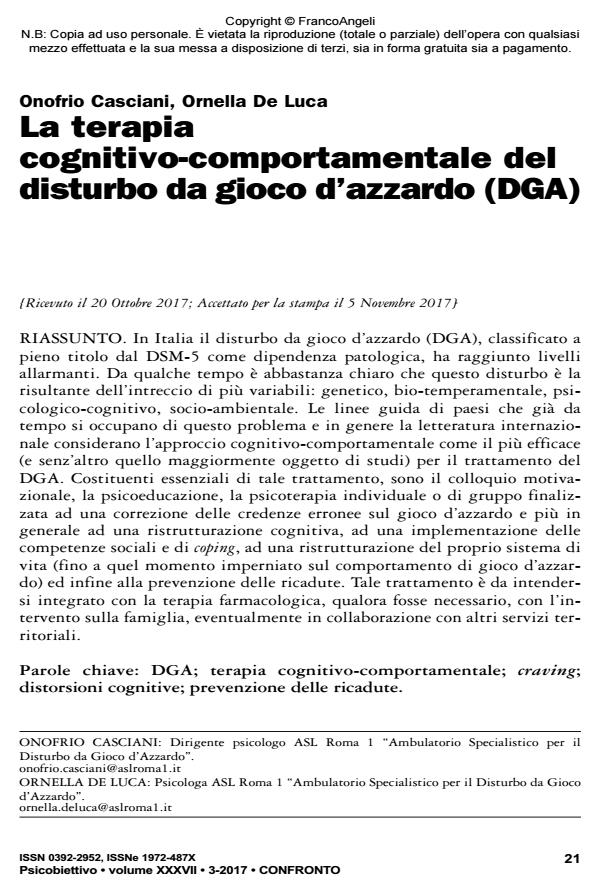Cognitive-behavioural therapy of the pathological gambling disorder
Journal title PSICOBIETTIVO
Author/s Onofrio Casciani, Ornella De Luca
Publishing Year 2017 Issue 2017/3
Language Italian Pages 22 P. 21-42 File size 137 KB
DOI 10.3280/PSOB2017-003002
DOI is like a bar code for intellectual property: to have more infomation
click here
Below, you can see the article first page
If you want to buy this article in PDF format, you can do it, following the instructions to buy download credits

FrancoAngeli is member of Publishers International Linking Association, Inc (PILA), a not-for-profit association which run the CrossRef service enabling links to and from online scholarly content.
In Italy, the Pathological Gambling Disorder (PGD), categorized by DSM-5 as a pathological addiction, has reached alarming levels. For some time it has been quite clear that this disorder is the result of the intertwining of several variables: genetic, bio-temperamental, psychological-cognitive, and socio-environmental. The guidelines developed by countries who have long been concerned with this issue and the international literature consider the cognitive-behavioral approach the most effective (and indeed the most studied) for the treatment of PGD. Essential elements of this treatment include the motivational interview, psychoeducation, individual or group psychotherapy aimed at correcting erroneous beliefs on gambling and more generally in cognitive restructuring, social deployment skills and coping, a restructuring of the lifestyle system (up to that point based on gambling behavior), and finally the relapse prevention. Such treatment is intended to be supplemented with drug therapy, if necessary, with intervention on the family, possibly in collaboration with other spatial services.
Keywords: Gambling Disorder; Cognitive-Behavioral Therapy; Craving; Cognitive Distortions; Relapse Prevention.
Onofrio Casciani, Ornella De Luca, La terapia cognitivo-comportamentale del disturbo da gioco d’azzardo (DGA) in "PSICOBIETTIVO" 3/2017, pp 21-42, DOI: 10.3280/PSOB2017-003002